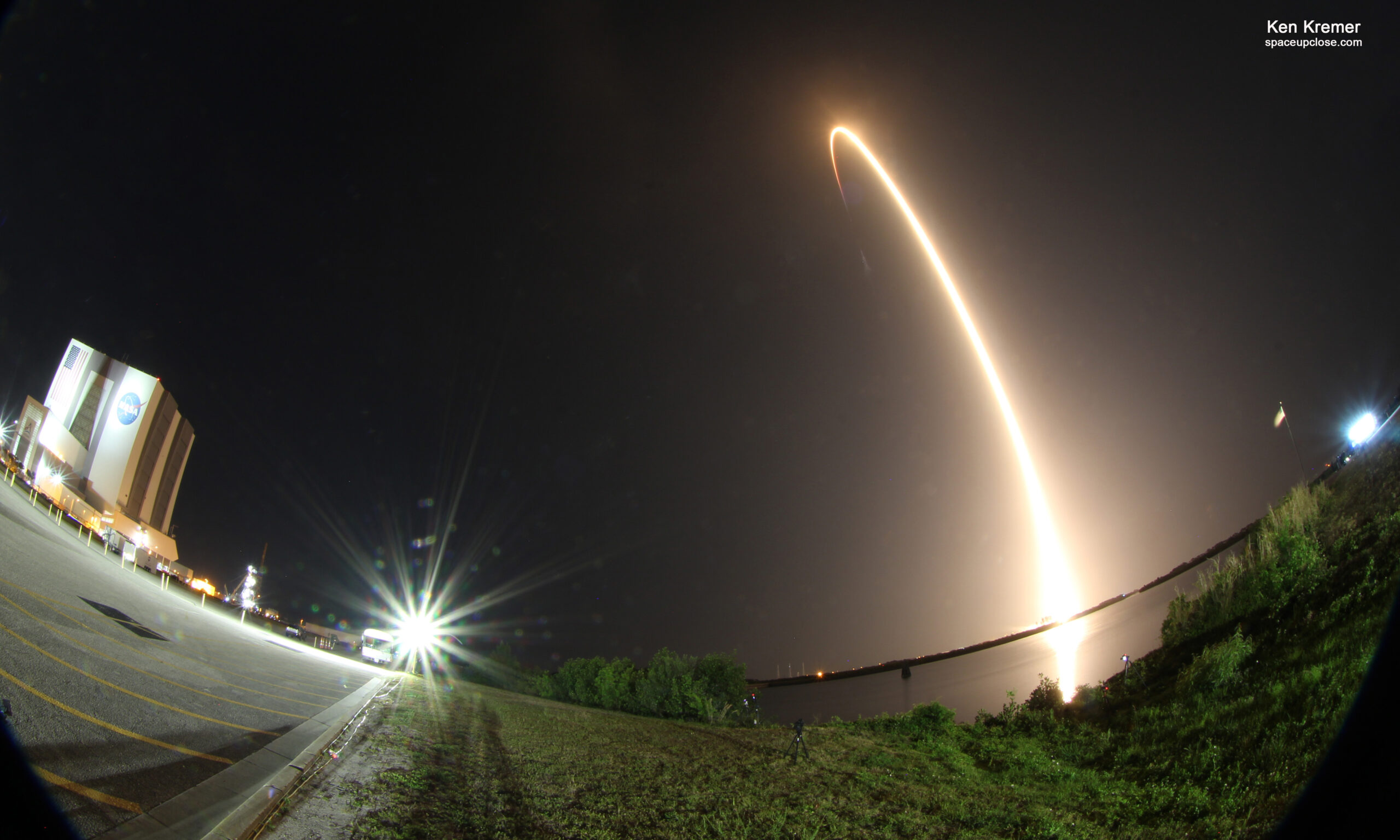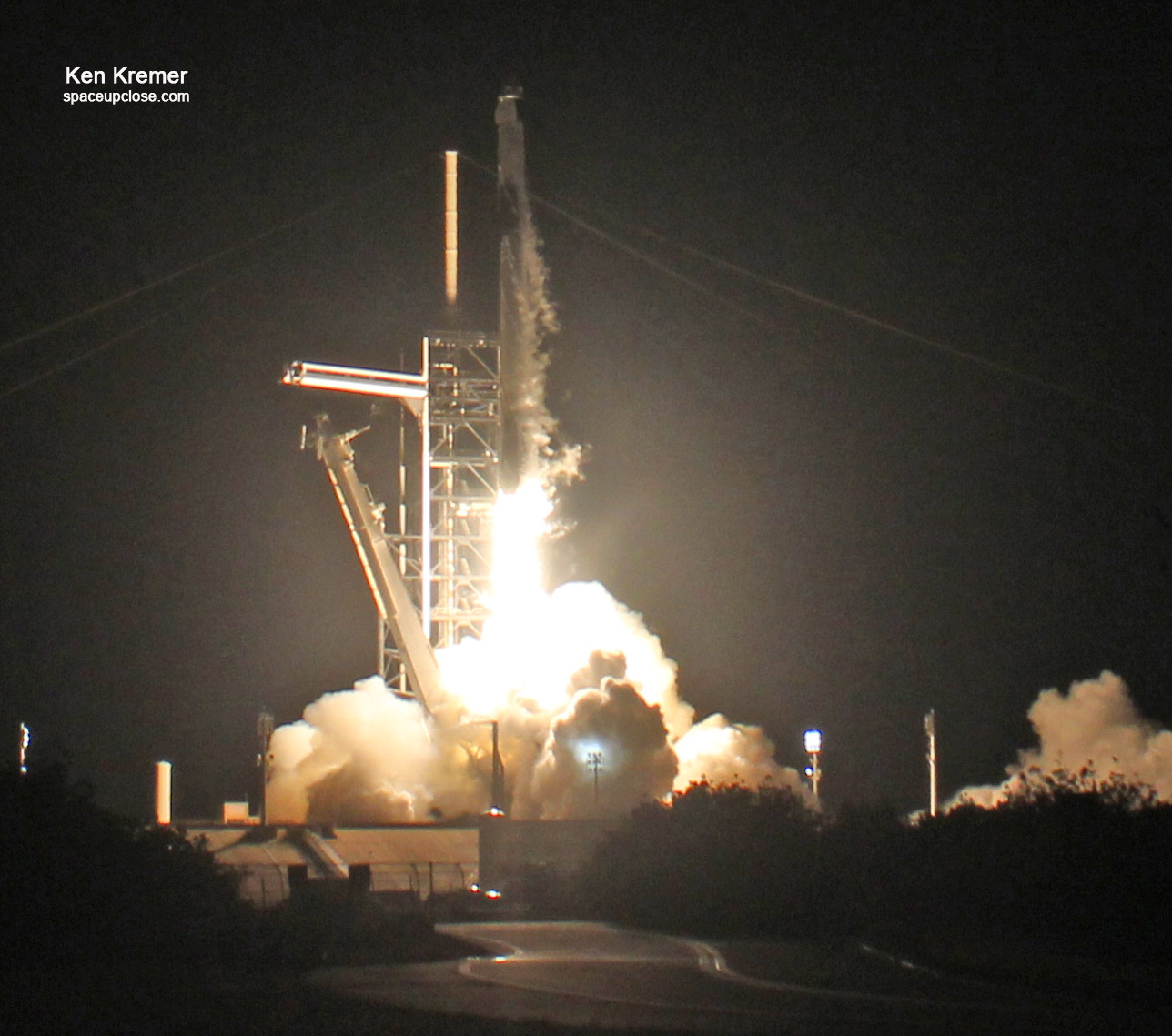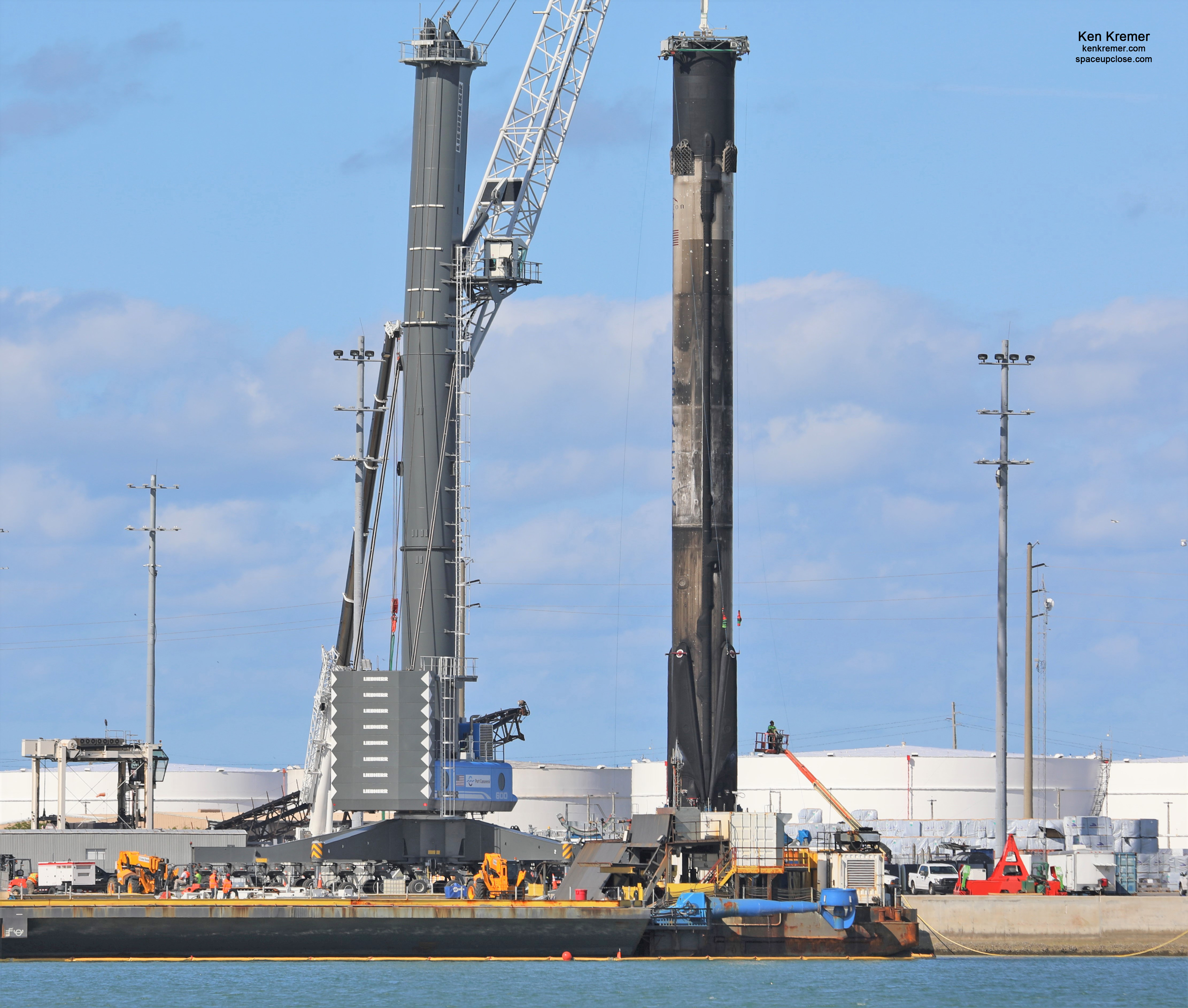
For SpaceUpClose.com & RocketSTEM
PORT CANAVERAL, FL – Despite a slightly harder landing than normal landing on the OCISLY droneship minutes after last weeks Starlink mission blastoff on Apr. 22, SpaceX workers successfully retracted all four of the recycled Falcon 9 1st stage landing legs in a single afternoon in Port Canaveral on Tuesday April 28, after craning it off the sea landing platform onto land in the early morning hours.
By 5:30 PM ET Tuesday all four legs had been successfully retracted flush up against the sooty booster’s external core and it made for a remarkable sight to behold. See our photos.
Truly the Falcon 9 booster success made for a bright ray of hope amidst all the COVID-19 related closures which resulted in the bustling Port being nearly deserted in the ongoing efforts to flatten the exposure curve and save peoples lives from a virus against which to that day we have no treatments or vaccines.
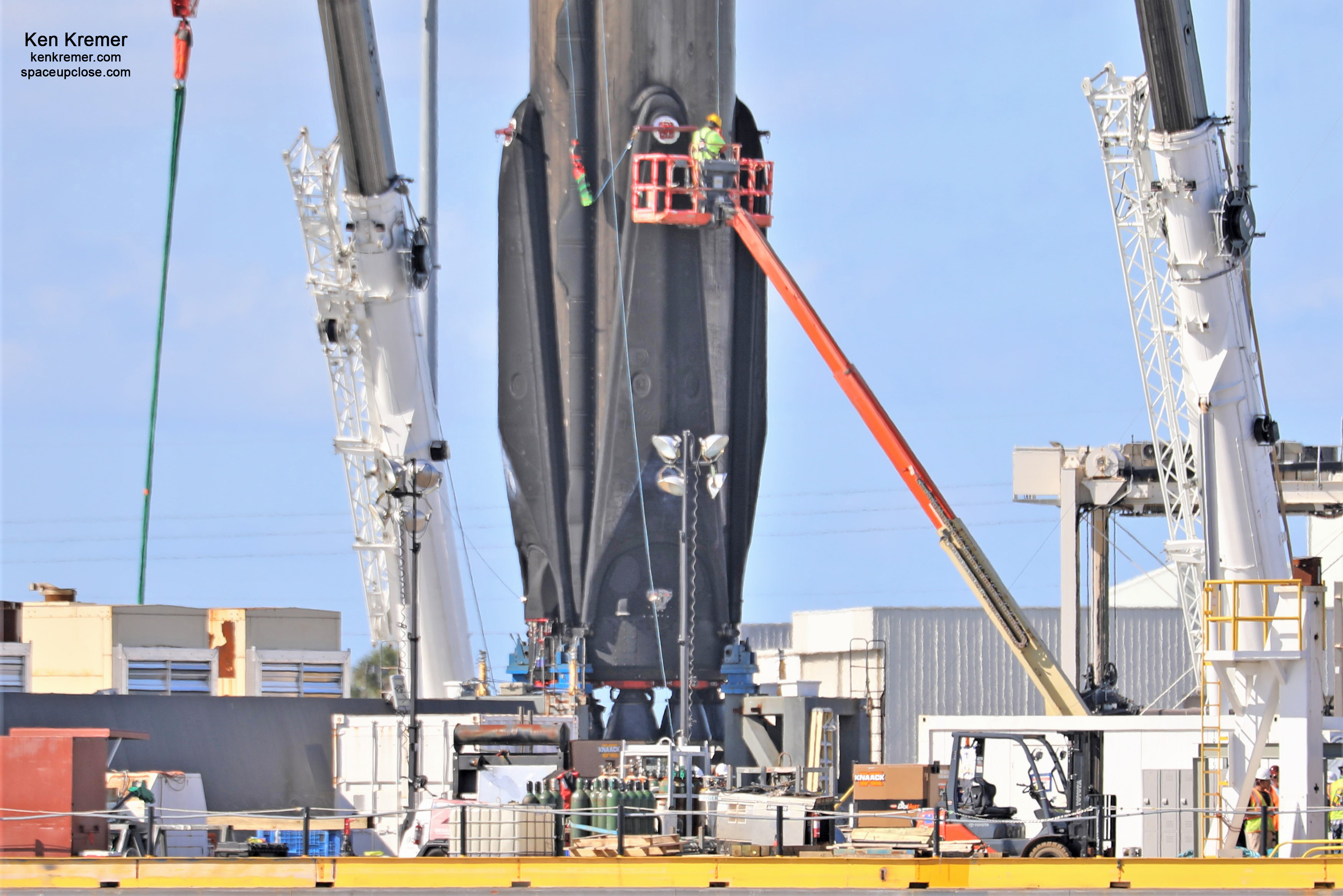
Enjoy our Space UpClose photo gallery of the Falcon 9 booster 1051.4 standing both vertical and resting horizonal throughout this week of the SpaceX crane crew efforts on at Port Canaveral.
Check back as the gallery grows.
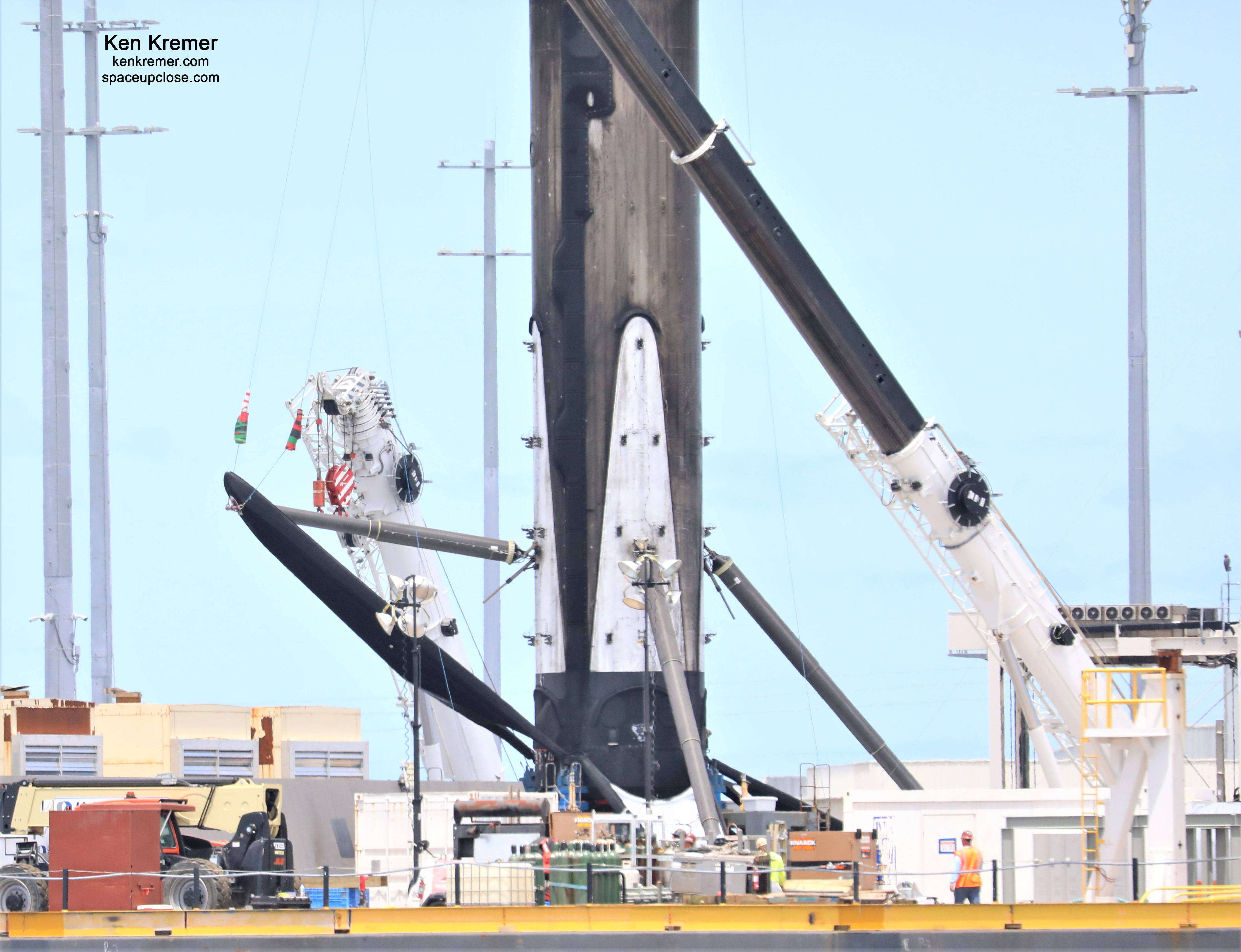
The booster appeared to have a slight tilt as it arrived back home and was towed into Port Canaveral on Sunday morning Apr. 26 and berthed at the droneships normal northside berthing port at North Cargo Pier 6 – – and it was resting slightly lower on deck with the landing legs slightly deflected downwards after touchdown but still high enough so as to apparently not damage the Merlin 1D engines.
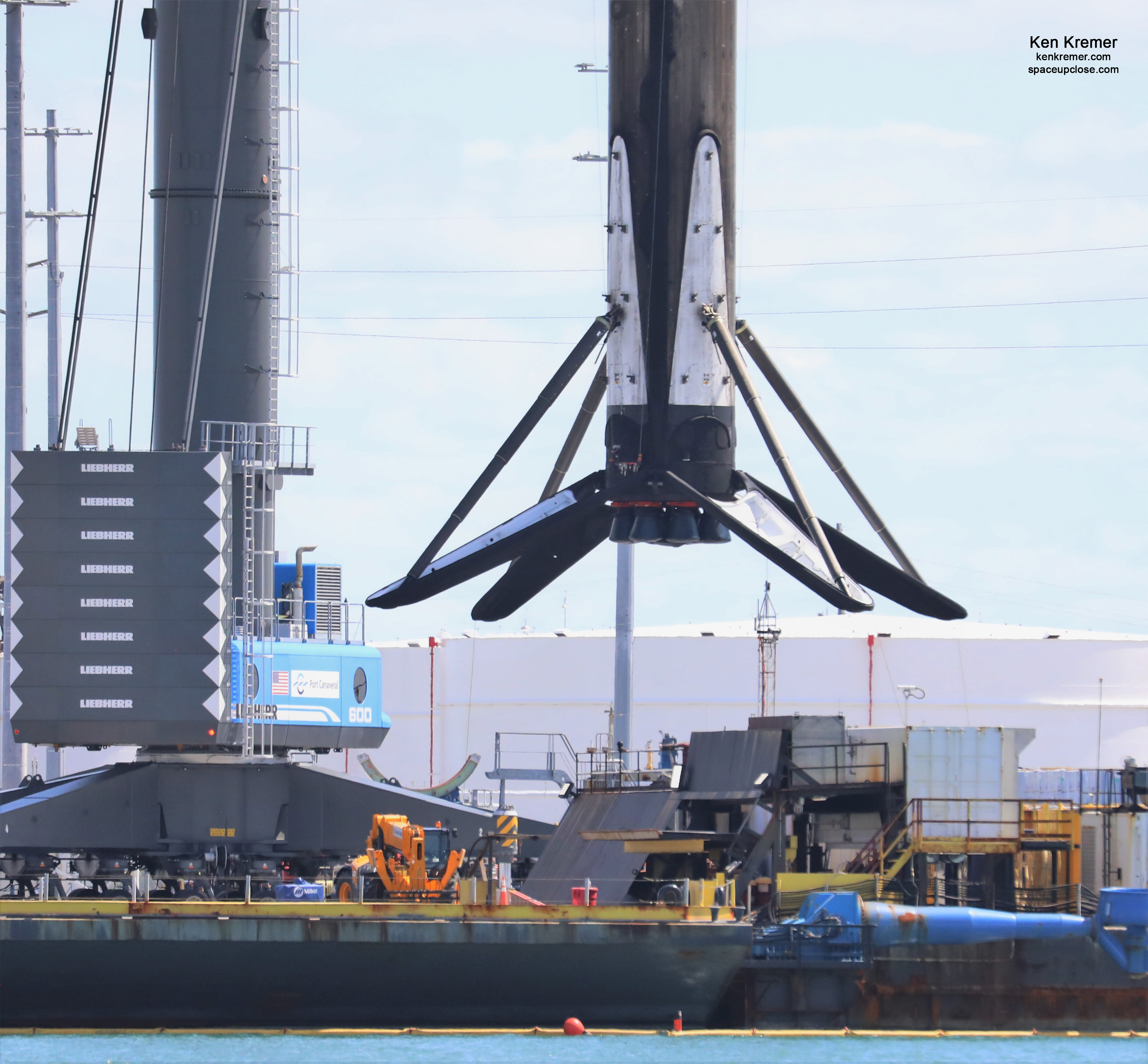
The next step was to attach the hi tech booster lifting cap and hoist the recovered 1st stage off OCISLY using the giant Liebherr crane and place it onto land on a ground pedestal for retraction or removal of the four landing legs.
But on Monday the cranes crew had to abort two attempts to attach the booster hoisting cap to the top of the 156 foot tall Falcon 9 first stage – quit possibly due to high winds – as I witnessed.
The SpaceX team did successfully attach the hoisting cap by early Tuesday morning.
Then they craned the booster 1051.4 in 2 stages off OCISLY docked in the Port Channel and onto the ground pedestal at the northside berthing port at North Cargo Pier 6 – In stage 1 from OCISLY onto land at about 915 AM. And then in stage 2 from land onto the pedestal at North Cargo Pier 6 for leg retraction.
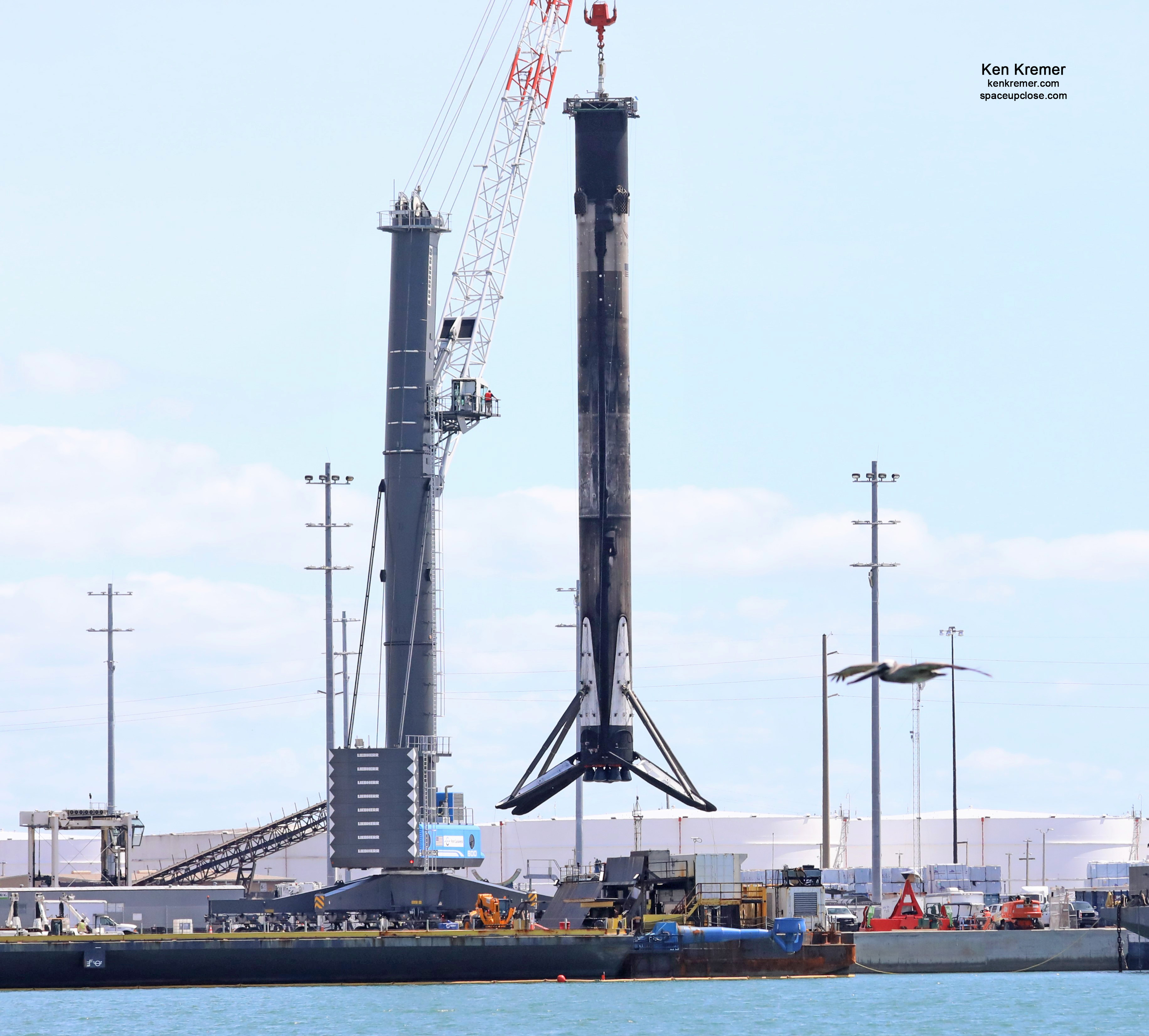
The leg retraction work using the booster hoisting device began around 1:30 p.m. EST Tuesday afternoon, Apr 28.
Crews attached the rope lines to the tip of the landing pad and then commanded the leg raising using the booster lift and leg retraction cap device bolted to the top of the recycled booster.
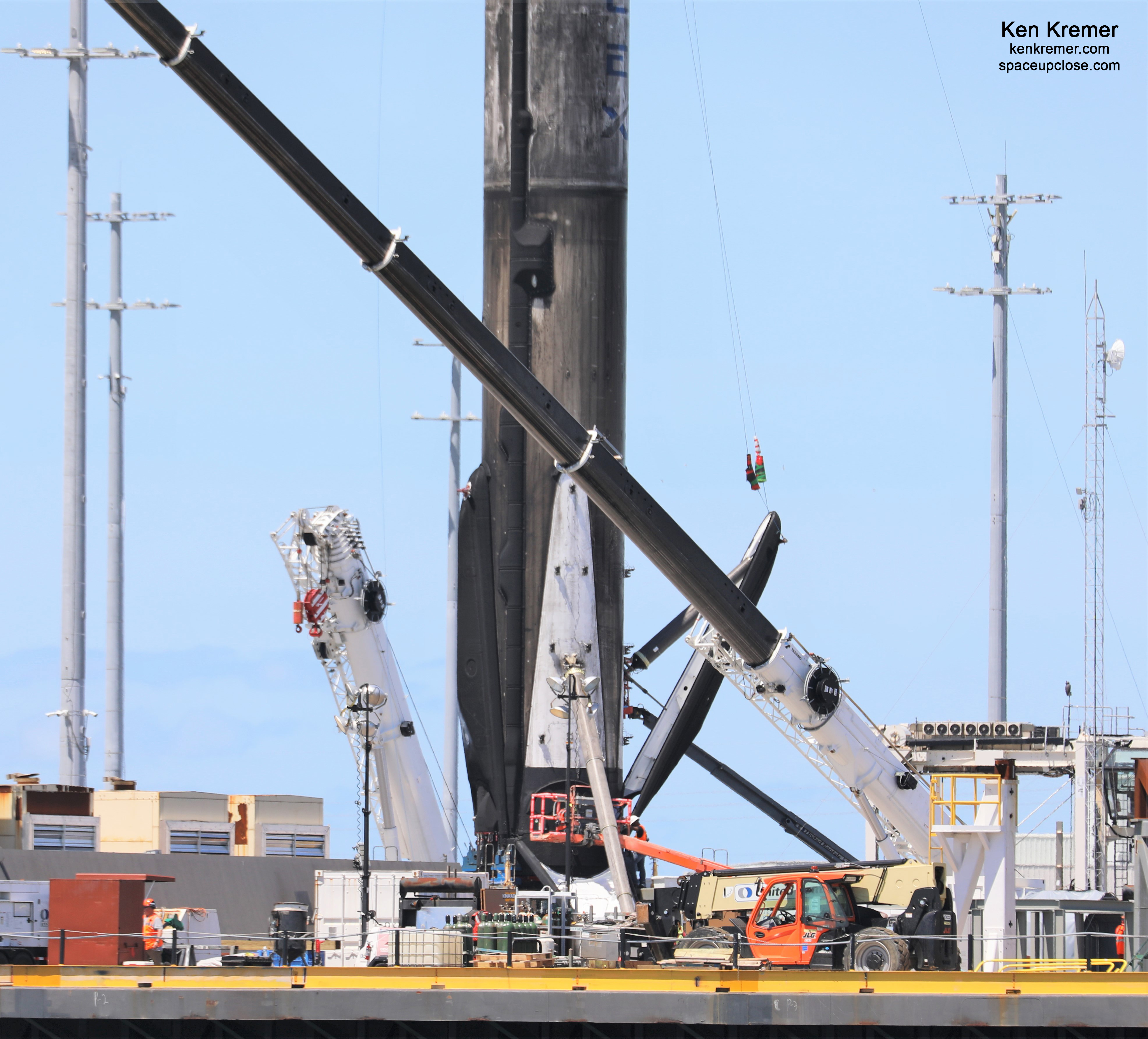
The leg retraction work started with the left leg in one nearly continuous operation that took roughly 30 minutes.
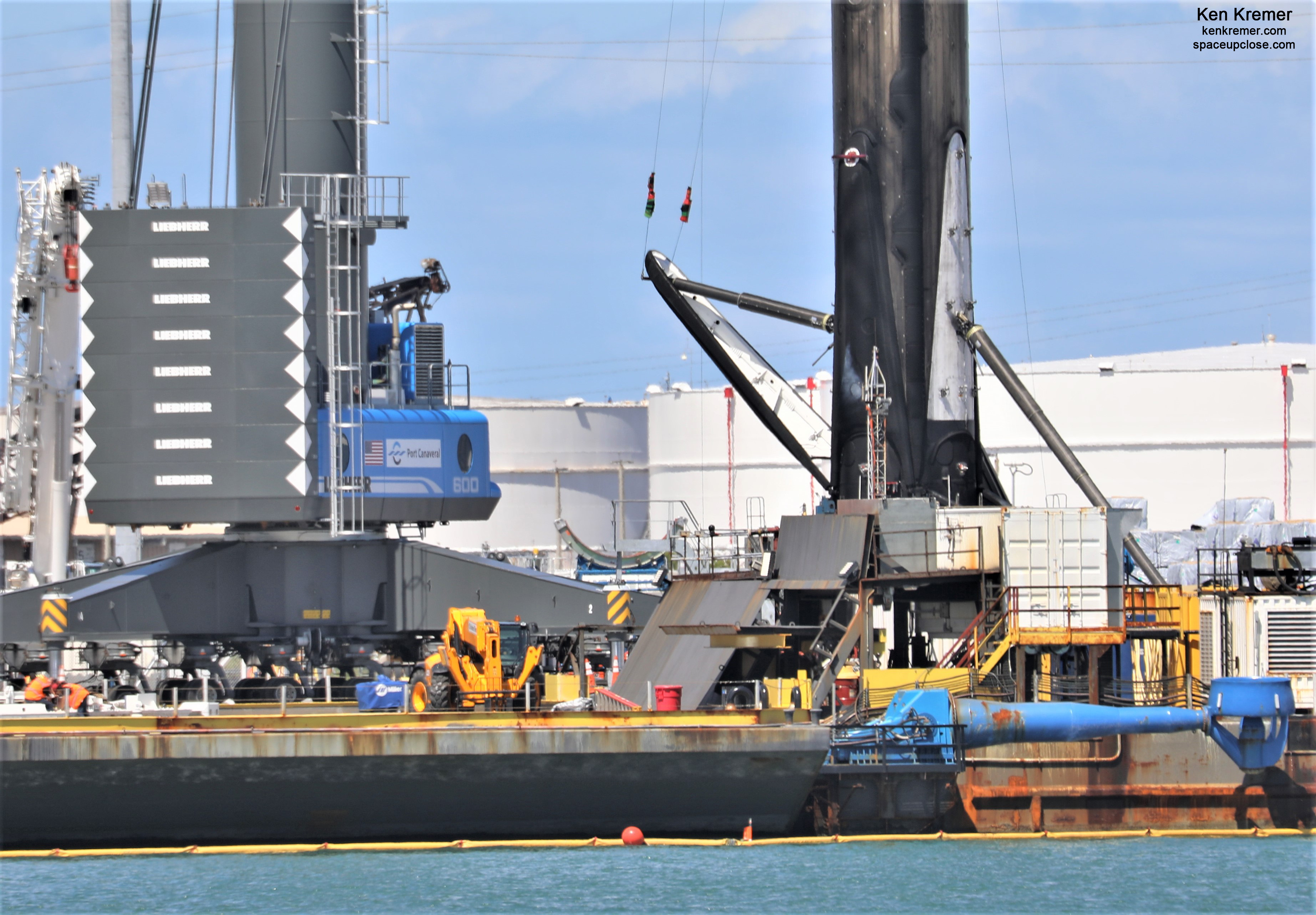
The port crane crew then proceeded to the right leg, followed by the back leg. Each operation appeared to go well taking some 20 to 30.
But the team encountered significant issues with the front leg starting around 330 p.m. After retracting the leg most of the way they had to lower it all the way back down. The up again and back and forth 4 more times- before finally succeeding after more than a hour of labor after 5 p.m.
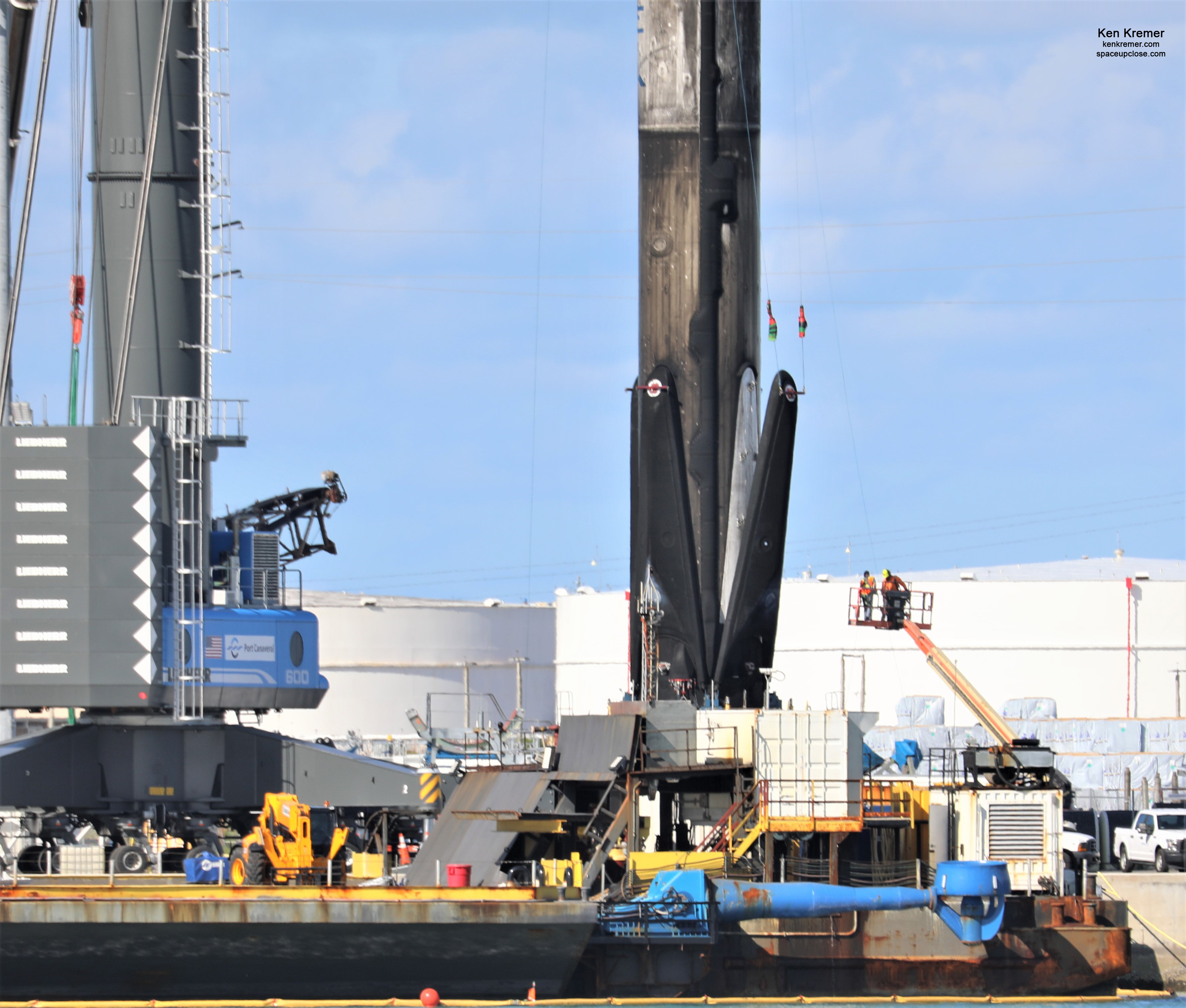
Thereafter the SpaceX team tilted and lowered the booster onto the wheeled transporter and attached ring clamps to secure it in place.
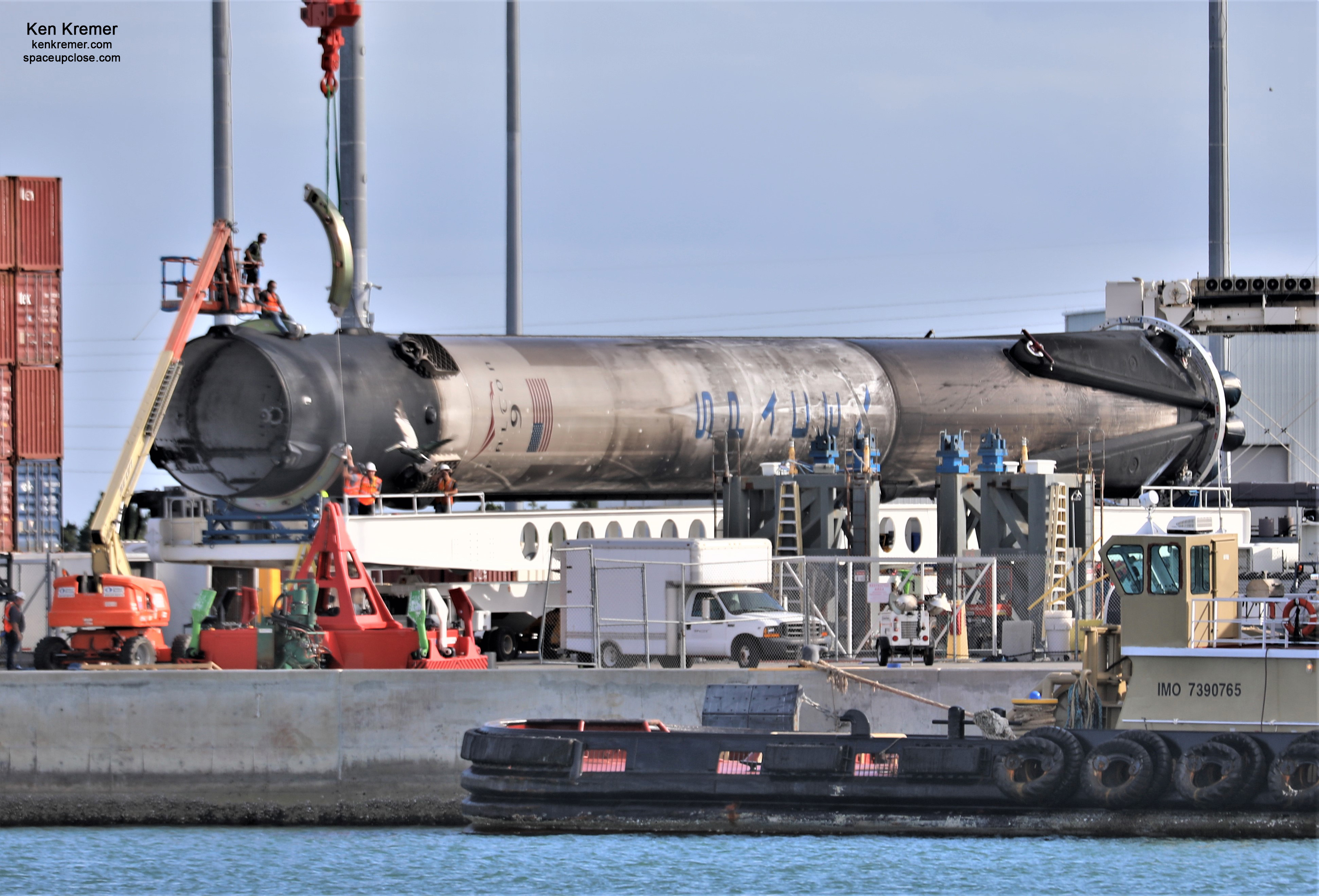
On Wednesday they placed a hood over the top and transported it back to the Cape later in the day.
Picture perfect liftoff of the 7th Starlink commercial mission took place Wednesday at 3:31 EDT, (1930:30 GMT), April 22 from seaside Launch Complex-39A (LC-39A) on NASA’s Kennedy Space Center, FL.
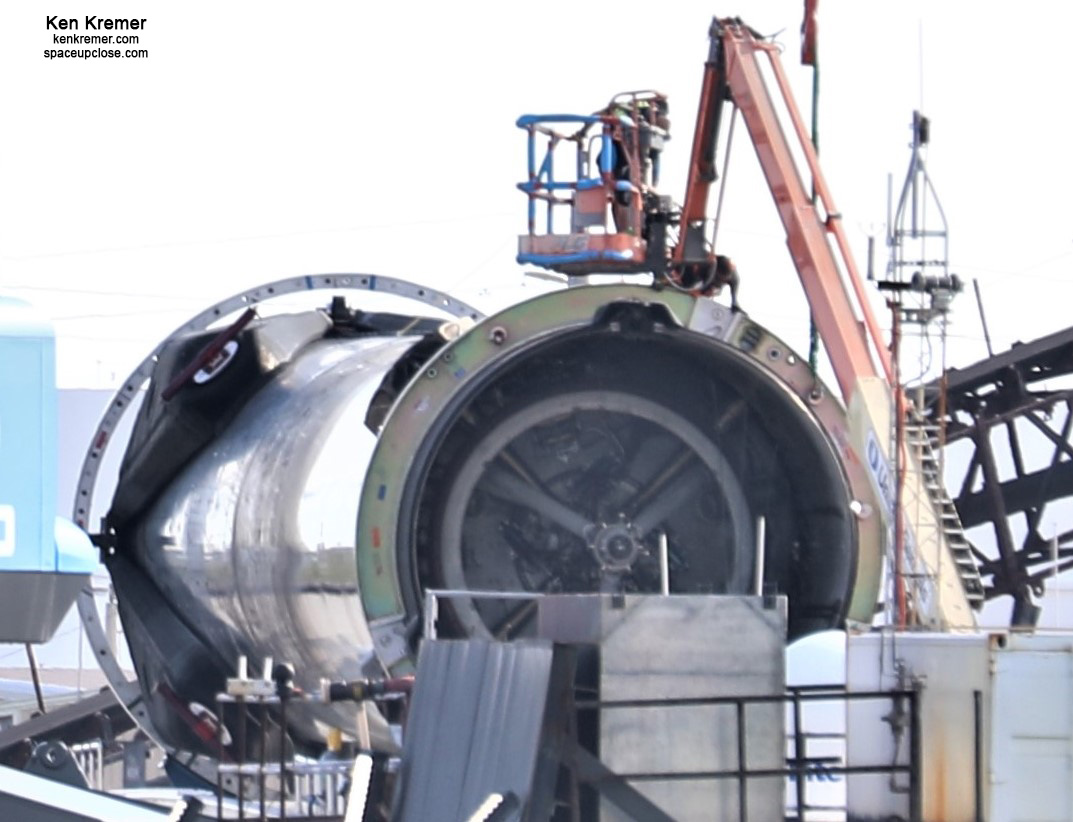
This recycled Falcon 9 first stage B1051 launched for the fourth time with recycled payload fairings as well.
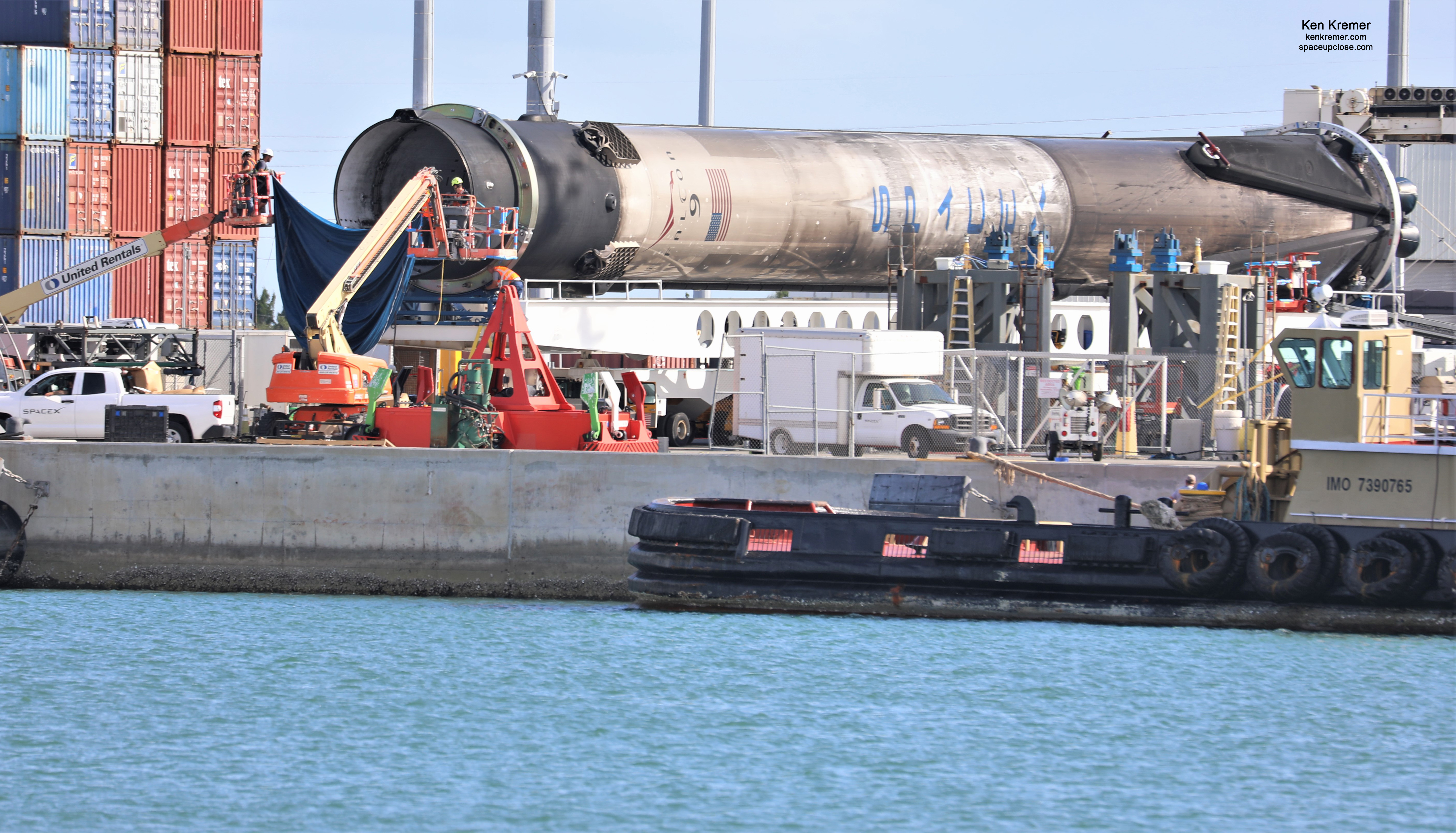
The payload comprises the seventh batch of 60 SpaceX built and owned Starlink broadband satellites launching to LEO with an overall mass of about 7.7 tons.
SpaceX is currently the owner of the largest fleet of Earth orbiting satellites – already numbering 360 Starlink satellites delivered to orbit earlier – and now 420 following the Apr 22 successful deployment of 60 more after all went well.
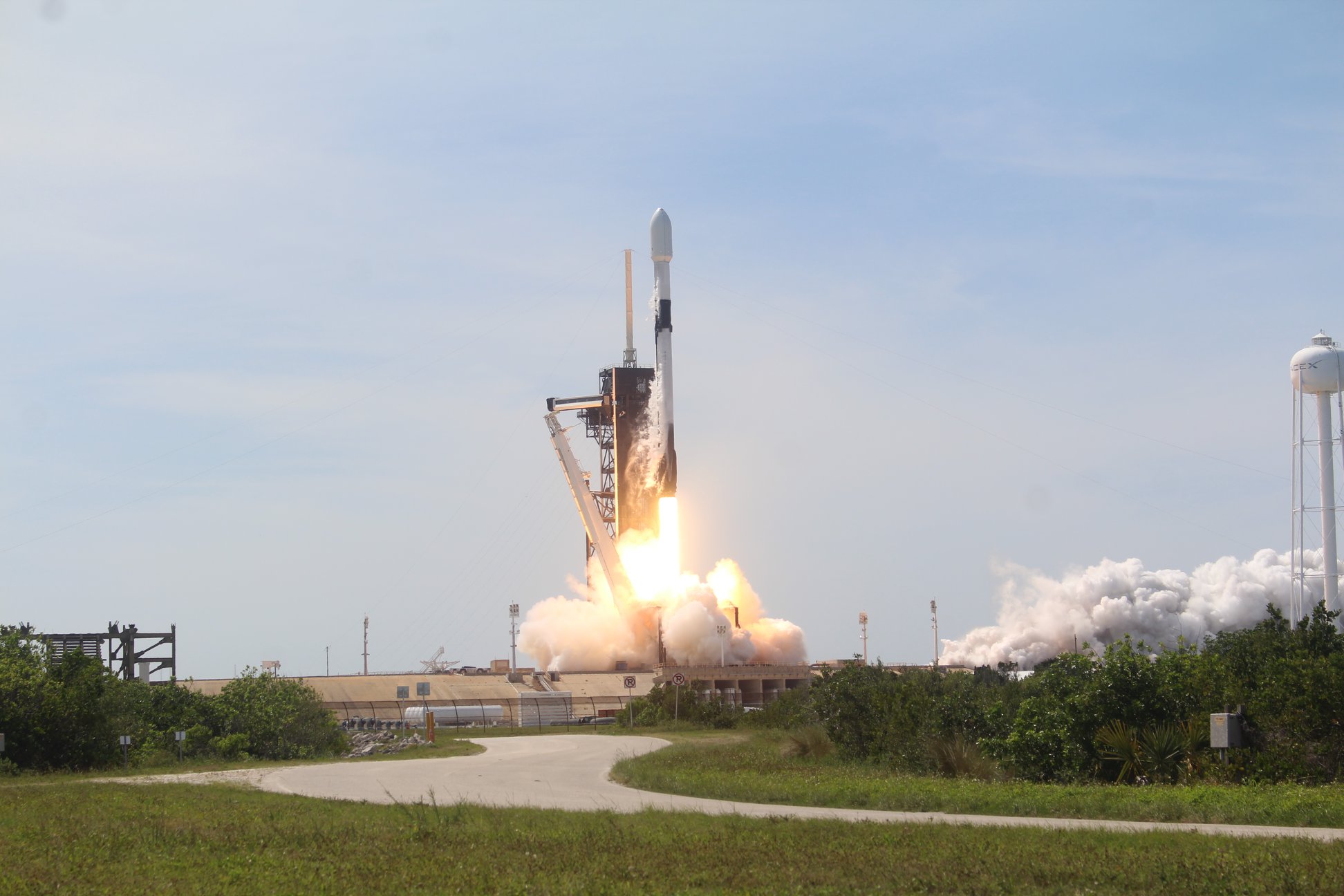
Watch Ken’s continuing reports onsite for live reporting of upcoming and recent SpaceX and ULA launches including Starlink, Solar Orbiter, In-Flight Abort, Mars 2020 and more at the Kennedy Space Center and Cape Canaveral Air Force Station.
Stay tuned here for Ken’s continuing Earth and Planetary science and human spaceflight news: www.kenkremer.com –www.spaceupclose.com – twitter @ken_kremer – email: ken at kenkremer.com
Dr. Kremer is a research scientist and journalist based in the KSC area, active in outreach and interviewed regularly on TV and radio about space topics.
………….
Ken’s photos are for sale and he is available for lectures and outreach events

x



